Top Ten Forms of Synesthesia
Synesthesia is a neurological condition in which stimulation of certain cognitive or sensory functions trigger an involuntary response in another cognitive pathway. This means people with the condition, known as synesthetes, could see flashing coloured lights in their field of view when hearing sounds, or always see written letters and numbers in corresponding colours.For people with this condition, this can be both a good and a bad thing. On the one hand, the natural correspondence between otherwise unconnected elements can improve their aptitude for processing memory, logical and numerical information, which benefits them when it comes to music, mathematics, management and other areas of expertise. On the contrary, it may sour relationships if certain aspects of a person can trigger unpleasant responses, and synesthetes may find themselves entirely unable to sit in specific everyday scenarios.
This list contains the documented forms of synesthesia, and the aspects of living with the conditions. I am not a synesthete myself, but I do encourage sharing experiences.
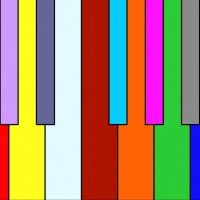
For people with Chromesthesia, any sound which the person hears is met, in real time, by a visual response. This may manifest as a set of coloured flashing lights, or floating shapes, which appear directly in their field of view. This happens whenever the person hears the sound, and the association between the sounds they hear and the colours of the objects they see are always the same (I.e. 500Hz or C minor always produces a dark red light).
In some cases, this effect comes into play for all sounds which the person hears. For some, it only occurs if the person recognises it as music, or a voice, or a specific source of sound. For all chromesthetes, however, whatever effect they experience is always there. The exact stimuli and the exact correspondence between sounds and visuals vary from chromesthete to chromesthete.
This condition enables the individual to recall patterns in sounds that they hear, which improves their skills in musical theory and their memory for spoken statements or encounters. However, for some, the effect can be overwhelming, with intense lights or objects in their field of view, when hearing loud noises or multi-person chatter.
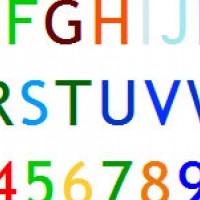
Grapheme-Colour Synesthesia is the condition for which handwritten and typeset letters, numbers or words consistently appear as a certain colour to the individual. This doesn't matter how they may have been written originally; they will always see the letter A as red, the letter I as blue, the number 5 as cyan, or however it is for this particular synesthete. Additionally, if they see a previously unseen character or word, a new colour will be assigned to it.
Memory recall for these people is very advanced, given the natural association between words and colours, they quickly learn a logical reasoning strategy from an early age. To give a sense of how this can aid them, picture one of those puzzles where you find the 1 in a huge grid of I's. Since they will appear in different colours, this takes less than a second!
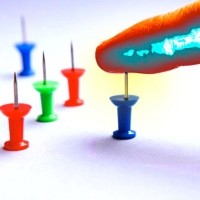
Mirror-touch synesthetes experience the same touches that they see other people or animals experience. If they see someone being hugged, they feel the impact of the person's body on them, even though nobody is touching them. If they see someone being tickled, they feel the very same sensation in exactly the same location on the body. If they see someone blowing their nose, they will feel their non-existent phlegm fly from their nostrils!
Sounds like fun and games, doesn't it? No. If you have this form of synesthesia, it means you can't watch horror movies, because if you see someone getting stabbed in the chest or impaled on a weather vane, you will experience exactly the same level of pain that comes with it.
Consequently, these people typically have a very strong sense of empathy, as it is likely that they have experienced the same pain that someone is going through.
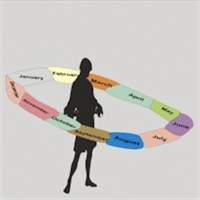
People with SSS see lists or sequences as points in space. This includes numbers, letters, calendar dates, points in time, etc. Like with similar forms of synesthesia, the arrangements of these points in space in the person's field of view is identical for any set of elements. Thus, when presented with a new sequence, they can visualise its behaviour instantaneously. In applications of mathematics, this skill is more than invaluable. Furthermore, their ability to recall events and the passage of time is practically unparalleled.

These synesthetes experience certain tastes when hearing words. Again, the correspondence is unique, meaning the word "collapse" might taste like chocolate, whereas the word "cat" might taste like drywall. In rarer circumstances, tastes also arise from non-verbal sounds such as police sirens.
For some such synesthetes, there are similarities with how some words "taste" based on either the meaning of the word (I.e. "boring" and "tedious" taste similar) or the sound of the word (I.e. "rhyme" and "time" sound similar). Furthermore, some who are multilingual experience an entirely new set of tastes, unlike anything before, when learning a new language. In some cases this can encourage them to do so, in others it may not.
Sometimes these individuals struggle with tasks and relationships. For instance, they could meet someone whose name leaves an unpleasant taste in their mouth, and they will do what they can to avoid them purely because of this.
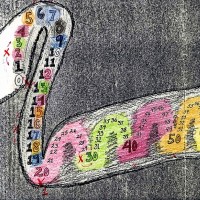
When an individual with this form of synesthesia thinks of a number, that number appears as text directly in their field of view. This often manifests as a map of numbers in the field of view when thinking about mathematical relations. This is very useful for them to visualise the behaviour of mathematical constructs, and these synesthetes often have exceptional skills in the relevant applications. The only disadvantage is that the arrangement can differ from the logical ordering of numbers seen in kindergarten, which causes a barrier when directly teaching maths.
Rare occurrences have shown this to occur with words as well. This is like having subtitles for your own thoughts.
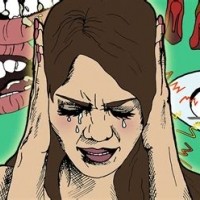
Misophonia, though a form of synesthesia, actually qualifies as a neurological disorder. Negative experiences and emotions, such as anger, fear or depression, are triggered by hearing certain sounds. These can be everyday sounds such as that of a car engine, rustling paper, or even breathing. Sufferers usually require cognitive behavioural therapy or noise-cancelling headphones, as the effect on their livelihood can be debilitating.
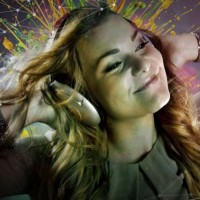
This form of synesthesia triggers specific touches in various parts of the body when hearing certain sounds. Just as with chromesthesia, the nature of the sound corresponds uniquely and precisely to different sensations.
This can be pleasant or unpleasant for the individual. One the one hand, one could listen to listen to music and literally get a massage from it, or maybe feel a hug every time a car drives past. On the other hand, a certain person's voice could cause their stomach to cramp.
Despite this, the tactile sensations are correlated with sounds in such a way that these synesthetes enjoy the same learning capabilities which come with chromesthesia.
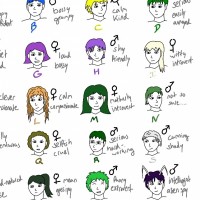
For this form, individuals cognitively associate letters, numbers and other characters with personality traits. They automatically associate these symbols with characters they have created, for instance, the letter A could be male, geriatric, short-tempered and six feet tall. When constructing sentences, they may picture relationships or scenarios between their characters in the process (e.g. A meets B in Japan for port and cigars). These individuals are typically much more creative than average, and have a talent for remembering stories and written statements.
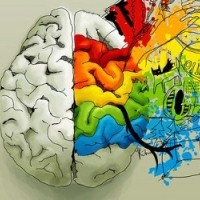
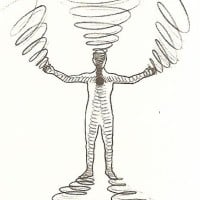
This extremely rare form of synesthesia is a more complex combination of multiple experiences, driven by multiple stimuli, which enables the individual to visualise relationships between multiple different words, sounds and such. This may involve visualising certain interacting shapes while studying music, experiments or equations. This is the closest we can get to cognitively visualising complex systems and networks, and accurately predicting the effect of changing variables on the system, including starkly non-trivial relationships. This could be applied to something as commonplace as predicting the weather to something as groundbreaking as modelling the onset of cancer.